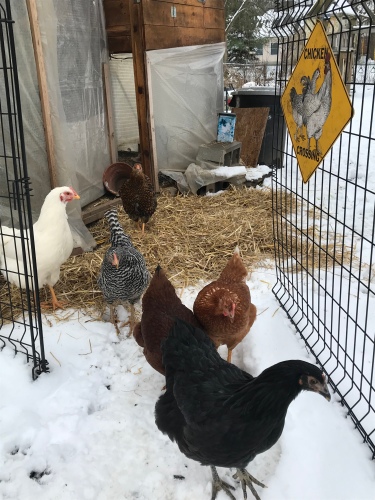Our new flock of chickens are nearly five months old and finally have names. We (Read Cora who was 4 at the time) named most of our first flock the day we got them. When one died after just five weeks, a friend cautioned us not to name them so early again, it was bad luck or something like that. (Reminds me of the Jewish superstition against naming babies before they are born.)
At any rate, if we weren’t going to name them right away, at least we could talk about names. For me, it started with “Professor McGonagall.” When we got these chicks in September, I decided I wanted to name one after her. It’s just fun to say, and the thought of a chicken professor made the human professor in me laugh.
When a friend pointed out that McGonagall’s first name was Minerva, I got even more excited. Hens and vintage lady names go together like peanut butter and jelly. If you aren’t familiar with this habit, search the interwebs for “old lady chicken names” and read on.
The Professor was reluctant to have her photo taken, she kept coming after the camera and pecking at me, so this is the best I can offer of her at this time. She’s the Golden Laced Wyandotte pecking at the ground.

Hermione Granger, a Rhode Island Red, was more accommodating.

Ginny Weasley proudly posed for her glamor shot. Ginny is a Golden Buffington.

Luna Lovegood, a White Plymouth Rock is a favorite of Cora’s.

Madame Maxime is one of my favorite’s and the most gentle of the bunch. She is, appropriate to her namesake, a Black Jersey Giant.

Finally, Nymphadora (another amazingly fun name to say!) Tonks is a Dominque. Her comb is coming in the slowest. She’ll look a lot fancier once she’s got her crown.

Here’s looking to your six month birthday which we will celebrate by feasting on quiche, egg salad with fresh mayonnaise, and fried eggs on EVERYTHING!














